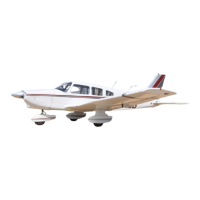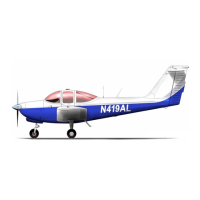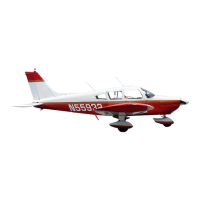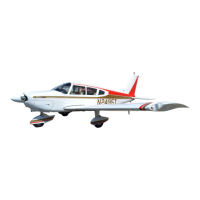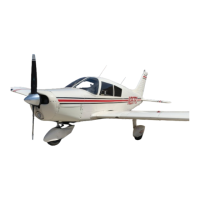THE NEW PIPER AIRCRAFT, INC.
PA-32-301FT / 301XTC
MAINTENANCE MANUAL
PAGE 2
Jun 1/03
4G2
56-10-00
FLIGHT COMPARTMENT
.
Windshield (Refer to Figure 1.)
A. Removal
(1) Remove the collars from around the bottom of the windshield and the trim strip from between
the windshield halves by removing the attaching screws.
(2) Remove the windshield by raising the lower portion of the windshield and carefully pulling it out
and down to release the top and side edges.
NOTE: A damaged windshield should be saved to provide a pattern for shaping the new
window.
(3) Clean old tape and sealer off the affected mating surfaces.
B. Installation
(1) Match new winshield to old. If necessary, cut or grind the new windshield to matching
dimensions.
(2) Apply 1/8 in. by 1 in. vinyl foam tape, Norton V510 or equivilent (i.e. - Tape - Vinyl Foam,
Type 2; 91-10-00, Consumable Materials), around entire edge of windshield.
(3) Place windshield into position, sliding aft and up into place. Take care not to dislocate vinyl
foam tape. Allow clearance for expansion between the two windshield sections at the center
post.
(4) Apply 1.5 in., 9 mil, black vinyl tape covering the previously applied vinyl foam tape and sealing
the joint between the windshield and airframe as indicated in Figure 1.
(5) Apply polyurethane, urethane, acrylic, or polysulfide sealant (i.e. - Sealant - Window and
Airframe; 91-10-00, Consumable Materials), to seal the forward edge of the vinyl tape at the
bottom of the center post, as indicated in Figure 1, View E-E.
(6) Reinstall collars and trim strip. Apply sealant as indicated in Figure 1 by forcing the sealant
between the mating parts. Mating parts may be separated slightly using a soft wooden wedge
or a tongue depressor. Force sealant deep into the gap. Take care to avoid bending or
scratching aluminum or windshield surfaces. Joints should be completely filled, and blended
smoothly with adjacent surfaces after clean-up.
(7) Remove excess sealant and exposed tape. Sealant may be cleaned from window areas using
rags, disposable wipers or plastic scrapers. A tool made of acrylic sheet with a wedged end
(.25 in. thick and 1.5 in. wide) can be fabricated and used. Tirpolene solvent or Apperson
solvent No. 120 may be used to clean polysulfide sealants.
